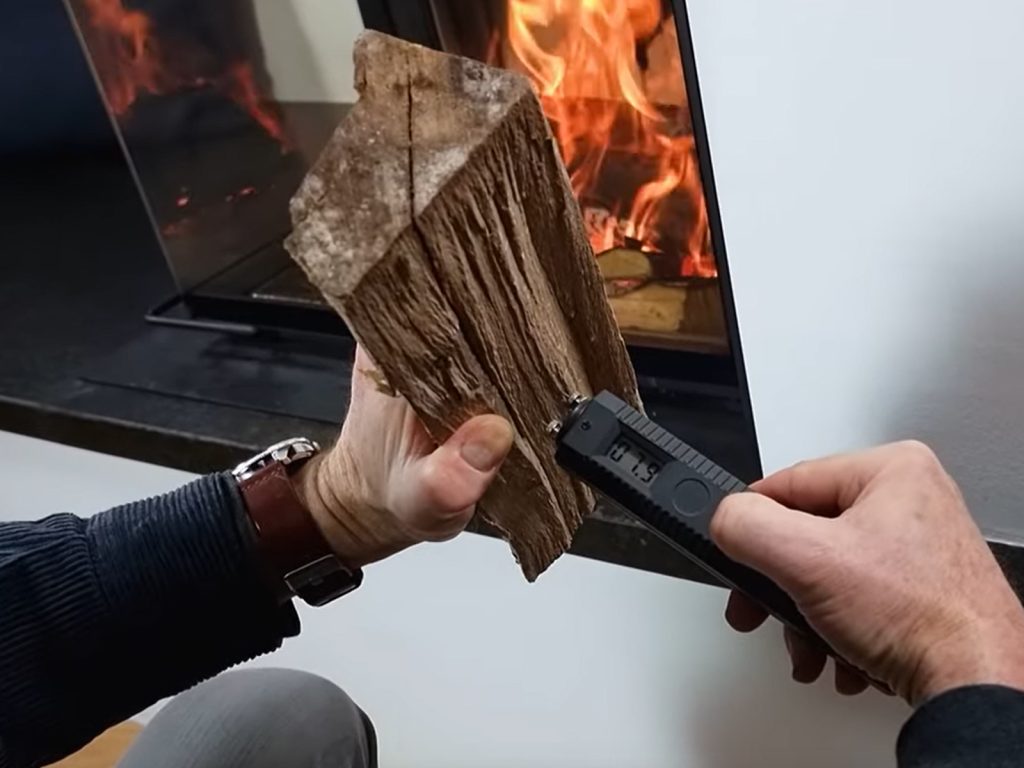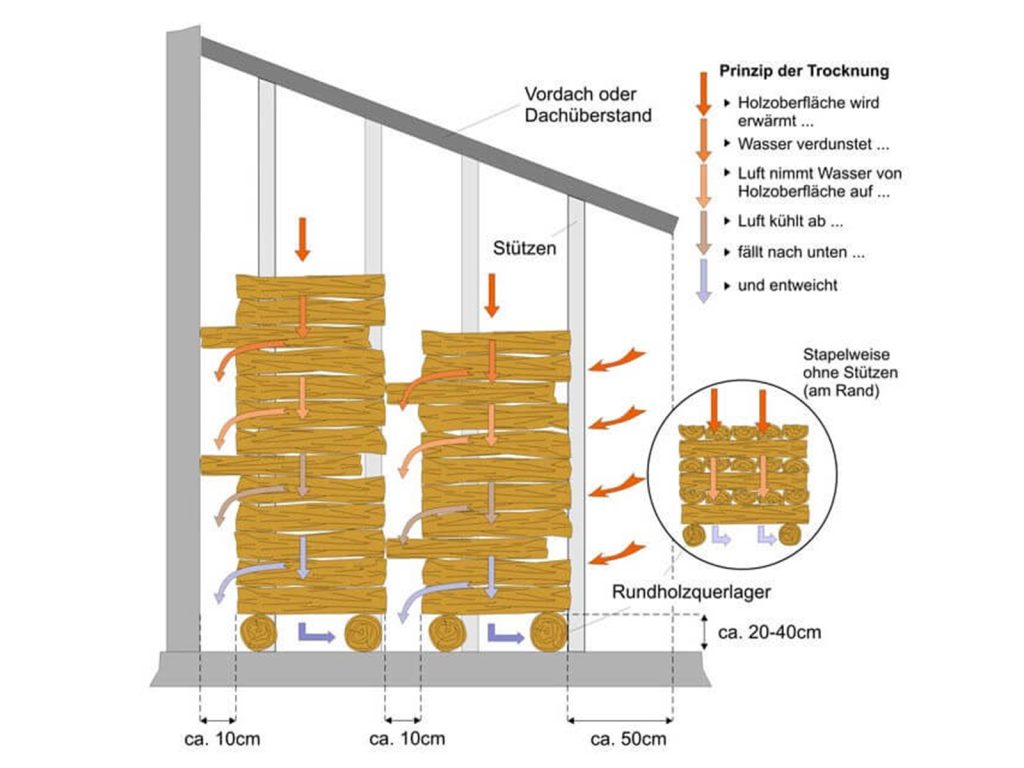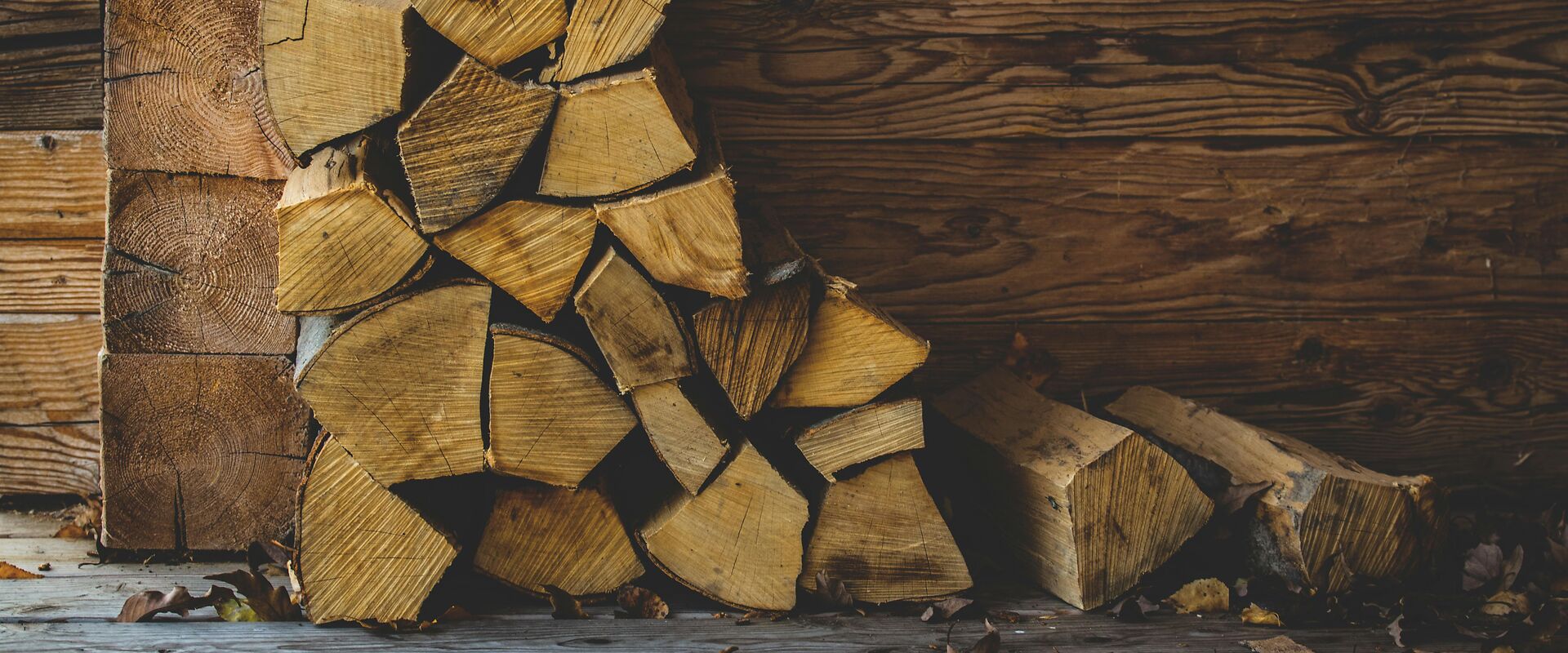If that’s not the case, it’s not only the quality of the firewood that suffers – the heating performance also drops significantly when the wood isn’t stored properly. Wood that’s too moist produces more smoke and doesn’t burn with a steady, pleasant flame, which also affects the look of the fire. To make sure nothing gets in the way of a cozy evening by the fireplace, we’ve put together a few tips on firewood.
Why store wood at all?
Fresh wood doesn’t burn well because much of its energy is used to evaporate water. This creates a lot of soot and moisture inside the stove and chimney. It goes without saying that such a fire performs poorly in terms of emissions.
If you want to enjoy the full experience of a wood fire with maximum heat output, you should use firewood with a residual moisture content of less than 20%.
Quick tip: You can get a wood moisture meter for around 20 euros. It’s an easy way to check the moisture level of all your firewood batches.

Where is the best place to store wood?
Firewood should be stored outdoors in a sunny spot facing south or west. It’s important to protect it from rain and other weather conditions while ensuring good air circulation to prevent mold growth.
Avoid closed or poorly ventilated spaces such as sheds or basements. Without airflow and sunlight, the wood can’t release its moisture, which greatly increases the risk of mold.
In addition to storing it against a house wall, covered shelters, wood stacks or free-standing piles are also good options.

How should I store my wood properly?
A popular option is to stack firewood in ready-made or self-built racks along an exterior wall. As mentioned earlier, it’s best to choose a sunny spot facing south or west. Then simply follow these steps:
* Create a dry base using pallets, round timbers or stones.
* Keep at least 10–15 cm of space between the firewood and the ground.
* Cross-stacking the wood allows it to dry especially quickly.
* When storing wood under a roof overhang, against a house wall or in an airy woodshed, leave at least 10 cm of space between the wood and the wall for ventilation.
* After the summer drying period, protect the wood immediately from rain and weather. If you use a tarp, make sure there’s enough airflow.
Quick tip: If possible, bring your daily firewood supply indoors a few days in advance so it can acclimate in a heated room.

How long does wood need to be stored?
Within six to twelve months, firewood – as shown in the illustration – can naturally dry to a moisture level below 20%. If you stock up on freshly cut firewood in spring, you’ll have no problem enjoying a low-emission burn in the next heating season. If the wood hasn’t been stored correctly, the drying process can take up to two winter periods. Storing wood for more than four years can cause gas-rich components to evaporate, while natural decomposition gradually reduces its heating value.
Which type of wood should I use for heating?
Alongside proper storage, the choice of wood species also plays a major role in achieving good heating performance and a cozy fire atmosphere. Not all firewood is the same. Just as coniferous and deciduous trees differ, so do their burning time and intensity. Some types of wood burn with a calm, steady flame, while others produce more sparks. Burn time also varies: softwoods generally burn faster than hardwoods because each type has a different material density per kilogram.
Tip: The most popular and commonly used firewood types in Germany are beech, oak, ash and birch.
Conclusion
For heating performance in particular, it’s important to store the wood in a dry, well-ventilated place so that the residual moisture drops below 20%. The storage location and proper protection from the weather are key to achieving this.
Expert advice
Pay attention to moisture level and wood type. When storing and drying wood, always make sure there’s good air circulation. As a consumer, you’ll also benefit from using dry wood – it’s the only way to achieve the best heating performance.





